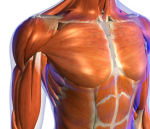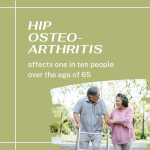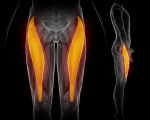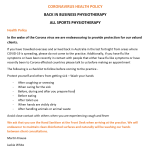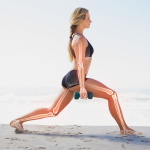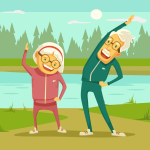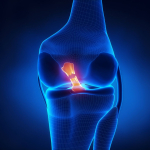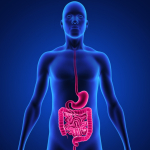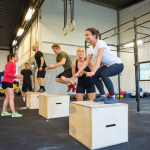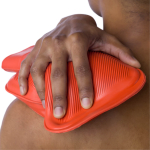The lord of the rings
Introduction
The ribcage makes up a disproportionately large area of the spine, is responsible for the majority of the rotation in the spine, houses the lymphatics, sympathetic nervous system and diaphragm. As well as protecting important organs, it is also covered by many layers of muscles, myofascia, visceral membranes and pleura, and has the shoulder blades and neck stabilising upon it. The abdominal muscles and diaphragm cross the lower 6 ribs, as do the erector spinae lumborum. Additionally, the latissimus dorsi spans the shoulder, thorax and continues onto the pelvis, as do the previously mentioned muscle slings. The upper half of the thorax has a similar complexity of muscle slings, crossing the neck, up to the head. Hence, large expanses of the body are muscularly and neurophysiologically linked to the thorax. Many traditional exercise therapies, such as Yoga, pay a significant amount of emphasis on thoracic movement.

The thoracic rings can be likened to 'dinner plates'. When they are stacked on top of one another the plates are stable and each 'plate' can be turned without affecting the stability. However, when the 'plates' are slightly mal-aligned the stack comes crashing down. With thoracic rings, when they become mal-aligned, the muscles around the trunk tighten up to prevent further movement. This in turn affects diaphragmatic movement and the normal 'ebb and flow' of the breath of life. The reduced 'ebb and flow' as well as the sideways shifts of the ribs reduces the normal pressure movements within the sympathetic ganglia during breathing, resulting in potential sympathetic nervous system dysfunctions. This can lead to heightened background muscle tension and vasoconstriction of the blood vessels as well as potential changes in sudomotor (sweating) function. Additionally, shallowness of breath can lead to hyperventilation (high respiratory rate, low tidal volume) resulting in respiratory alkalosis and metabolic acidosis. Metabolic acidosis leads to further sympathetic nervous system hypersensitivity. It is important to recognise that hypermobility can lead to ring shifts which then, paradoxically, lead to muscle tension and increased stiffness.

Besides looking upon the ribcage as a stack of dinner plates, another analogy would be to consider the 'rings' as a spring, much like a 'slinky'. Importantly, examining the rings as springs means that they hold an important shock absorbing function with 'damping' and oscillating properties.

Assessment
Assessment involves identification of the thoracic ring shifts and examination of the thoracic range of movement. An attempt should be made to correct the ring shifts and assess the effects on the range of movement. Lateral diaphragmatic breathing, active straight leg raise and active leg extension should also be assessed before and after ring shift corrections. Once the rings are 'racked and stacked' an exercise regime can be commenced to maintain the ring positions.
Patients frequently seek treatment for pain in various parts of the body, but infrequently present for treatment of thoracic pain. Yet, simple, quick assessment and correction of the thoracic rings frequently demonstrates a link to the pain and musculoskeletal dysfunction in areas some distance away. Wainner et al (J orthop Sports Phys Ther, 2007; 37, 658-660) describe regional interdependence as “the concept that seemingly unrelated impairments in a remote anatomical region may contribute to, or be associated with, the patient’s primary complaint.” This perception suggests that interventions targeting adjacent anatomical areas may directly affect the outcomes of the involved joint. Boyles et al (Manual Therapy, 2009 Aug;14(4):375-80) and Strunce et al (J Man Manip Ther, 2009, 17(4): 230-236) have demonstrated the immediate effects of thoracic spine thrust manipulation on patients with shoulder impingement syndrome. The latter describing a 51% reduction in shoulder pain, 30-38 degree increase in range of motion (ROM), and a mean patient perceived global rating change of 4.2 in 21 subjects. McCormack (J Man Manip Ther., 2012 Feb;20(1):28-34) showed a 25 degree improvement in shoulder ROM when using thoracic spine manipulation in the treatment of adhesive capsulitis. Brian Mulligan described 'mobilisation with movement' (MWM) techniques on the first rib which have dramatic effects on the cervical ROM for contralateral lateral flexion and ipsilateral rotation. Canadian physiotherapist Linda Joy Lee has advocated ring shift corrections for low back pain, pelvic girdle pain and hip problems, as well as shoulder and neck issues.
Lateral diaphragmatic breathing
Assessment of breathing patterns are vital in establishing the nature of dysfunction. Are they shallow breathers tending to hyperventilation and metabolic acidosis? Where in their chest do they breath? Do they feel that their stomach always sticks out and they find that it is very difficult to develop muscle tone in the abdominal muscles? Remember all the abdominal muscles attach to the lower 6 ribs. Conscious amelioration of breathing patterns has the benefit of creating an exercise every 12-20 breaths when it becomes 'habit forming' and residing in the subconscious.

There is a very good reason that Yoga and Alexander technique have breathing as a major part of their practice.
Assessment of leg muscle strength with ring relocations
Active Straight Leg Raising (ASLR) with and without thoracic ring relocations can provide invaluable information on the effect of the thorax on the engagement of the muscles in the lower limb and the transfer of forces across the pelvis. Ideally, the strength improves and the pelvis doesn't rotate when the ring shifts are corrected
Active Leg Extension (ALE) can also be tested through thoracic ring relocations and retesting the ROM and strength of the subsequent ALE. Guteal and hamstring activation should occur at the same time or the gluteals come on a little earlier. Furthermore, ideally the lumber spine doesn't hyperextend or go into excessive rotation.
See : Muscle Energy Technique section of this website for more details.
Physiotherapy - oscillations and damping ratios (deterministic chaos)
Musculoskeletal Physiotherapists have a variety of oscillatory techniques, which can be employed to optimise 'the spring like elements' of the thorax and general movement system. Balance between potential and kinetic energy can be used to enhance muscle contraction-relaxation cycles, which has a direct link to the peripheral sympathetic nervous - both mechanically and neurophysiologically.

Since the peripheral sympathetic nervous system (SNS) is a chain of ganglia residing on the front aspect of the back of the ribs - between the ribs and lung fields, any oscillatory activity in the thorax will affect movement of those ganglia. This entails physical movement as well as axoplasmic fluid pressure differentials. The peripheral SNS also adjusts resting muscle tension (tone) and blood flow. Providing anti-gravity oscillatory actions on the muscles thus influences the 'ebbs and flows' of the SNS activity. Evidence for peripheral SNS and descending central SNS modulation is described in the Pain and Inflammation section of this website

DRG + Dorsal Root Ganglion; IVF = Intervertebral Foramen. SNV = Sinuvertebral Nerve
Physiotherapy - thoracic traction
Physiotherapy can consist of 'hands on' mobilisations of the spine, thoracic rings, myo-fascia as well as guidance and feedback on exercise execution and progression. Additionally, the application of lumbar mechanical traction can lead to mobilisation of the thorax and it's peripheral sympathetic ganglia. Moreover, the post traction exercise protocol, reinforces the oscillatory mode of action of the postural stabilisers and spinal mobilisers before a person gets up from the treatment table.
Assumptions (incorrectly) based on ancient Greek treatment approaches describe Traction of the Lumbar Spine. This occurred then and to this present day, because treatment is often directed at pathology in the low back, such as disc hernia and sciatic nerve pain. However, low dose Mechanical Traction actually has a profound influence on the thorax. It's quite plausible that the mechanical effect of elongating the 'slinky' or mechanical spring aspects of the thorax, allows for 'ring relocations to occur', better breathing oscillations as well as improved symmetrical peripheral SNS oscillatory movement. For those who don't believe me, just feel the cervical spine (neck), tension and intervertebral movement, as well as front upper ribcage passive movement, whilst on low dose lumbar (low back) mechanical traction, and see the difference!! For further discussion and evidence please refer to the Neurophysiological Effects of Mechanical Traction found elsewhere on this website.
Hideki Tanabe et al (2021) Journal of Orthopaedic Science Volume 26, Issue 6, November, Pages 953-961
Post Traction Exercises are essentially those described above, whereby abdominal and bridging exercise in supine are complemented with oscillations of the pelvis and hips. From Supine, exercises in side lying, then in 4 point kneeling, are followed by cyclic isometrics in sitting and finally oscillatory movements in standing, including the 'Oscillatory Wall Planks', 'Queen Mums', 'Hammer Heads' and Alexander breathing exercises.
Supine exercises can also include Pilates style hip and core stability, as well as simple cycling. These have some cardiovascular conditioning effect as well as promote blood flow from the calf.
Hip stabilisation and thoracic mobilisation
Several exercises exist which stabilise the hip and shoulders whilst mobilising the thorax.
Swiss Ball exercises can also be used to improve thoracic ring stability
Thoracic strengthening
Thoracic strengthening regimes should be instigated to maintain the ring alignment
Stretching regimes

Many people stretch their limb muscles. However, if the thorax is the 'driver' of limb muscle tension, then the thorax needs to be nullified beforehand and/or involved in the process of stretching. For example both hamstrings and quadriceps can be stretched with lateral flexion and lateral breathing of the diaphragm. Classic moves out of yoga such as the 'down dog -> warrior pose -> triangle' can involve rib cage movements.
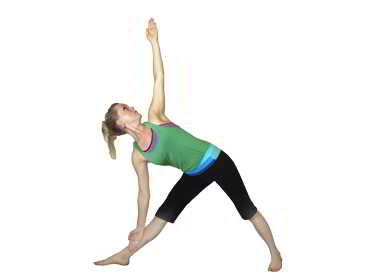
Conclusion
At Back in Business Physiotherapy we routinely examine the thorax and devise exercise regimes involving the thorax for almost any condition in the body. Regardless whether the thorax is symptomatic or not, we should always consider the beneficial effects of thoracic movement for the organs, lungs, and sympathetic nervous system. Hands on treatment should include soft tissue techniques such as myofascial releases, dry needling, joint mobilisations and manipulations, taping, muscle energy techniques, specific 'hands on' biofeedback for movement and specific muscle activation.
Martin Krause
Uploaded : 22 May 2013
Updated : 30 April 2024



















